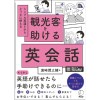We’ve talked before about handy Japanese words and phrases we wish we could toss around in English. This kind of linguistic jealousy doesn’t flow in just one direction, though. Japanese businesspeople regularly make use of a number of English phrases, either because they’re more concise, precise, or just sound cooler to their ears than their Japanese counterparts.
Sometimes, though, knowing English isn’t enough to understand these loanwords, since their pronunciations can get pretty garbled in the transition from English to Japanese speakers. Feeling confident in your ability to translate English translated into Japanese back into English? Read on and see how many you can decipher.
As a quick primer on how the pronunciation of English loanwords gets corrupted, it’s important to remember two things about the Japanese language. First, there are a handful of sounds that just don’t exist in Japanese, most famously “l,” but also “v,” “si,” “du,” and “th,” to name a few.
Second, with a few exceptions such as “cha,” “tsu,” and “shi,” and combinations with “n,” you can’t have two consecutive consonants in a single syllable, meaning that each consonant always comes with a vowel sound attached to it. Combined with the complete lack of certain sounds we mentioned above, this is why, for example, technology giant Apple gets pronounced “Appuru” in Japanese (the double ‘p’ indicates a delay a fraction of a second long before the second syllable, in case you were wondering).
Okay, no more hints. It’s time to get this quiz started!
1. agurii
Starting off with an easy one, this is “agree.” For example, when asked his opinion regarding an offer, your Japanese coworker might give his stance as agurii. Sadly, this one can cause confusion amongst lower-level Japanese English speakers as “agree,” “ugly,” and even “angry” all sound remarkably similar to their ears.
2. komitto
If whoever’s calling the shots is ready to agurii, he’ll probably let his counterparts know that he’s ready to komitto, or “commit” to the project. Once again, the double consonant here denotes a pause a fraction of a second long before that particular syllable. Try to komitto that rule to memory, ne.
3. konsensasu
Of course, a cornerstone of Japanese workplace harmony is making sure everyone in the organization is on the same page, which is why business deals tend to take longer here than in many Western countries. Odds are, even if the person you spoke to in the meeting seemed enthusiastic about your offer, before he can komitto he’ll have to go back to his office and make sure there’s a konsensasu (“consensus”) among the rest of his coworkers.
4. regyureeshon
Of course, no matter how good the proposal sounds, it’s always necessary to make sure your business dealings are all above-board. To that end, you’ll want to research any relevant regyureeshon, or “regulations” (which loses its terminal “S” because Japanese vocabulary doesn’t differentiate between singular and plural nouns).
5. konpuraiansu
Of course, just reading and familiarizing yourself with the regyureeshon isn’t enough. You’ll also need to check the items of the contract against them to make sure everything is in a state of konpuraiansu (“compliance”). Why is compliance written in Japanese with an “n” and not an “m”? Like we said, all Japanese consonants except “n” come with a vowel attached, so if they’d used an “m” , or rather a “mu“, the already vowel-packed word would have ended up being komupuraiansu. Yikes.
6. besuto efooto
Finally, if everything checks out, once you sign the contract and it’s time to get to work, it’s imperative that every member of the team give his or her besuto efooto/best effort.
After all, in the modern, competitive marketplace, that’s the only way to succeed in business, or bijinesu, as the Japanese call it.
Heard any other borrowed business words in office Japanese? Let us know in the comments section below!
Source: Naver Matome

 “We wasted so much time in English class” — Japanese Twitter user points out major teaching flaw
“We wasted so much time in English class” — Japanese Twitter user points out major teaching flaw 10 Japanese words you know now that irritate some Japanese businessmen (because they’re English)
10 Japanese words you know now that irritate some Japanese businessmen (because they’re English) Researchers use uniformity of Japanese language to read people’s minds
Researchers use uniformity of Japanese language to read people’s minds Japanese government to make first change to romanization spelling rules since the 1950s
Japanese government to make first change to romanization spelling rules since the 1950s Learn Japanese through ridiculous manga: Death Vote 【Episode #6】
Learn Japanese through ridiculous manga: Death Vote 【Episode #6】 Beautiful new Final Fantasy T-shirt collection on the way from Uniqlo【Photos】
Beautiful new Final Fantasy T-shirt collection on the way from Uniqlo【Photos】 Randomly running into a great sushi lunch like this is one of the best things about eating in Tokyo
Randomly running into a great sushi lunch like this is one of the best things about eating in Tokyo Disney princesses get official manga makeovers for Manga Princess Cafe opening in Tokyo
Disney princesses get official manga makeovers for Manga Princess Cafe opening in Tokyo Foreign English teachers in Japan pick their favorite Japanese-language phrases【Survey】
Foreign English teachers in Japan pick their favorite Japanese-language phrases【Survey】 Hey, Japanese taxi driver! Take us to your favorite restaurant in Tsuruga City!
Hey, Japanese taxi driver! Take us to your favorite restaurant in Tsuruga City! Is the new Shinkansen Train Desk ticket worth it?
Is the new Shinkansen Train Desk ticket worth it? Kyushu-exclusive Black Mont Blanc goes nationwide in a “Special” way
Kyushu-exclusive Black Mont Blanc goes nationwide in a “Special” way New book teaches Japanese people English to help out foreign travelers
New book teaches Japanese people English to help out foreign travelers Lawson convenience store teaches us how to make okonomiyaki with no knife or bowl 【SoraKitchen】
Lawson convenience store teaches us how to make okonomiyaki with no knife or bowl 【SoraKitchen】 Starbucks releases a special sparkly tumbler in Japan to support diversity
Starbucks releases a special sparkly tumbler in Japan to support diversity Our Japanese reporter visits Costco in the U.S., finds super American and very Japanese things
Our Japanese reporter visits Costco in the U.S., finds super American and very Japanese things New Studio Ghibli bedding sets are cool in all senses of the word
New Studio Ghibli bedding sets are cool in all senses of the word We try out “Chan Ramen”, an underground type of ramen popular in the ramen community
We try out “Chan Ramen”, an underground type of ramen popular in the ramen community New Pokémon cakes let you eat your way through Pikachu and all the Eevee evolutions
New Pokémon cakes let you eat your way through Pikachu and all the Eevee evolutions There’s a park inside Japan where you can also see Japan inside the park
There’s a park inside Japan where you can also see Japan inside the park Japanese black curry “experiment” takes place at an unlikely restaurant branch in Tokyo
Japanese black curry “experiment” takes place at an unlikely restaurant branch in Tokyo Japanese convenience store packs a whole bento into an onigiri rice ball
Japanese convenience store packs a whole bento into an onigiri rice ball New definition of “Japanese whiskey” goes into effect to prevent fakes from fooling overseas buyers
New definition of “Japanese whiskey” goes into effect to prevent fakes from fooling overseas buyers Uniqlo opens its first Furugi Project secondhand clothing pop-up shop in Tokyo
Uniqlo opens its first Furugi Project secondhand clothing pop-up shop in Tokyo Studio Ghibli releases Kiki’s Delivery Service chocolate cake pouches in Japan
Studio Ghibli releases Kiki’s Delivery Service chocolate cake pouches in Japan Japan’s bone-breaking and record-breaking roller coaster is permanently shutting down
Japan’s bone-breaking and record-breaking roller coaster is permanently shutting down Toyota built a life-sized Miraidon Pokémon and are letting people test drive it this weekend
Toyota built a life-sized Miraidon Pokémon and are letting people test drive it this weekend Foreign passenger shoves conductor on one of the last full runs for Japan’s Thunderbird train
Foreign passenger shoves conductor on one of the last full runs for Japan’s Thunderbird train Kyoto bans tourists from geisha alleys in Gion, with fines for those who don’t follow rules
Kyoto bans tourists from geisha alleys in Gion, with fines for those who don’t follow rules Studio Ghibli unveils Mother’s Day gift set that captures the love in My Neighbour Totoro
Studio Ghibli unveils Mother’s Day gift set that captures the love in My Neighbour Totoro Domino’s Japan now sells…pizza ears?
Domino’s Japan now sells…pizza ears? New Japanese KitKat flavour stars Sanrio characters, including Hello Kitty
New Japanese KitKat flavour stars Sanrio characters, including Hello Kitty Sales of Japan’s most convenient train ticket/shopping payment cards suspended indefinitely
Sales of Japan’s most convenient train ticket/shopping payment cards suspended indefinitely Sold-out Studio Ghibli desktop humidifiers are back so Totoro can help you through the dry season
Sold-out Studio Ghibli desktop humidifiers are back so Totoro can help you through the dry season Japanese government to make first change to romanization spelling rules since the 1950s
Japanese government to make first change to romanization spelling rules since the 1950s Ghibli founders Toshio Suzuki and Hayao Miyazaki contribute to Japanese whisky Totoro label design
Ghibli founders Toshio Suzuki and Hayao Miyazaki contribute to Japanese whisky Totoro label design Doraemon found buried at sea as scene from 1993 anime becomes real life【Photos】
Doraemon found buried at sea as scene from 1993 anime becomes real life【Photos】 Tokyo’s most famous Starbucks is closed
Tokyo’s most famous Starbucks is closed One Piece characters’ nationalities revealed, but fans have mixed opinions
One Piece characters’ nationalities revealed, but fans have mixed opinions We asked a Uniqlo employee what four things we should buy and their suggestions didn’t disappoint
We asked a Uniqlo employee what four things we should buy and their suggestions didn’t disappoint Princesses, fruits, and blacksmiths: Study reveals the 30 most unusual family names in Japan
Princesses, fruits, and blacksmiths: Study reveals the 30 most unusual family names in Japan Studio Ghibli’s new desktop Howl’s Moving Castle will take your stationery on an adventure
Studio Ghibli’s new desktop Howl’s Moving Castle will take your stationery on an adventure The surprising reasons why some hiragana aren’t allowed to be used on Japanese license plates
The surprising reasons why some hiragana aren’t allowed to be used on Japanese license plates Katsu isn’t curry! Four kinds of katsu, and three delicious ways to eat them【Video】
Katsu isn’t curry! Four kinds of katsu, and three delicious ways to eat them【Video】 The Japanese you learn at school vs the Japanese used in Japan【Video】
The Japanese you learn at school vs the Japanese used in Japan【Video】 TV audiences in Japan surprised to see “Pikachu,” “Raichu” as members of U.S. Olympic team
TV audiences in Japan surprised to see “Pikachu,” “Raichu” as members of U.S. Olympic team What’s wrong with English education in Japan? Pull up a chair…
What’s wrong with English education in Japan? Pull up a chair… The science behind why English speakers can’t pronounce the Japanese “fu”
The science behind why English speakers can’t pronounce the Japanese “fu” RocketNews24’s six top tips for learning Japanese
RocketNews24’s six top tips for learning Japanese The 10 most attractive Japanese women’s names, as chosen by dating app users
The 10 most attractive Japanese women’s names, as chosen by dating app users Tokyo Bon Japanglish song is a crazy way to learn Japanese 【Video】
Tokyo Bon Japanglish song is a crazy way to learn Japanese 【Video】 Keisuke Honda apologises for English mistake at press conference 【Video】
Keisuke Honda apologises for English mistake at press conference 【Video】 Everyday Japanese names that make English speakers chuckle
Everyday Japanese names that make English speakers chuckle Kyoto cafe with unfortunate name, gorgeous sandwiches keeps getting mistaken for e-commerce giant
Kyoto cafe with unfortunate name, gorgeous sandwiches keeps getting mistaken for e-commerce giant LoCoS: The universal language we’ll be using by 2065, according to legendary Japanese designer
LoCoS: The universal language we’ll be using by 2065, according to legendary Japanese designer Asahi Brewery asks: Why not mix beer and Calpis? So we do…
Asahi Brewery asks: Why not mix beer and Calpis? So we do… Top 10 most irritating Japanese borrowed words – Part 2 (The people’s top 10)
Top 10 most irritating Japanese borrowed words – Part 2 (The people’s top 10) “Japanese English” can baffle native English speakers — but what about Korean speakers? 【Video】
“Japanese English” can baffle native English speakers — but what about Korean speakers? 【Video】
Leave a Reply